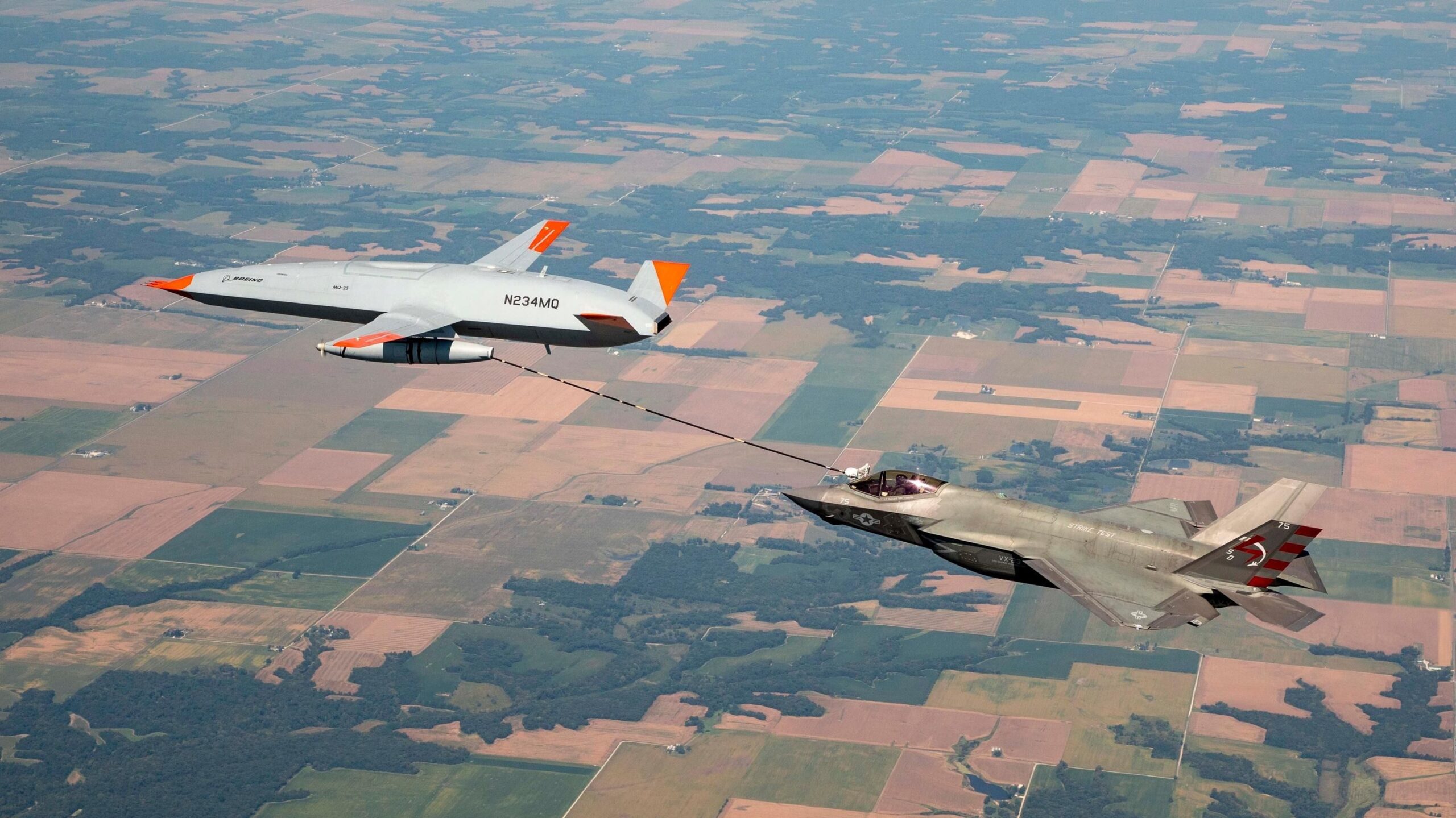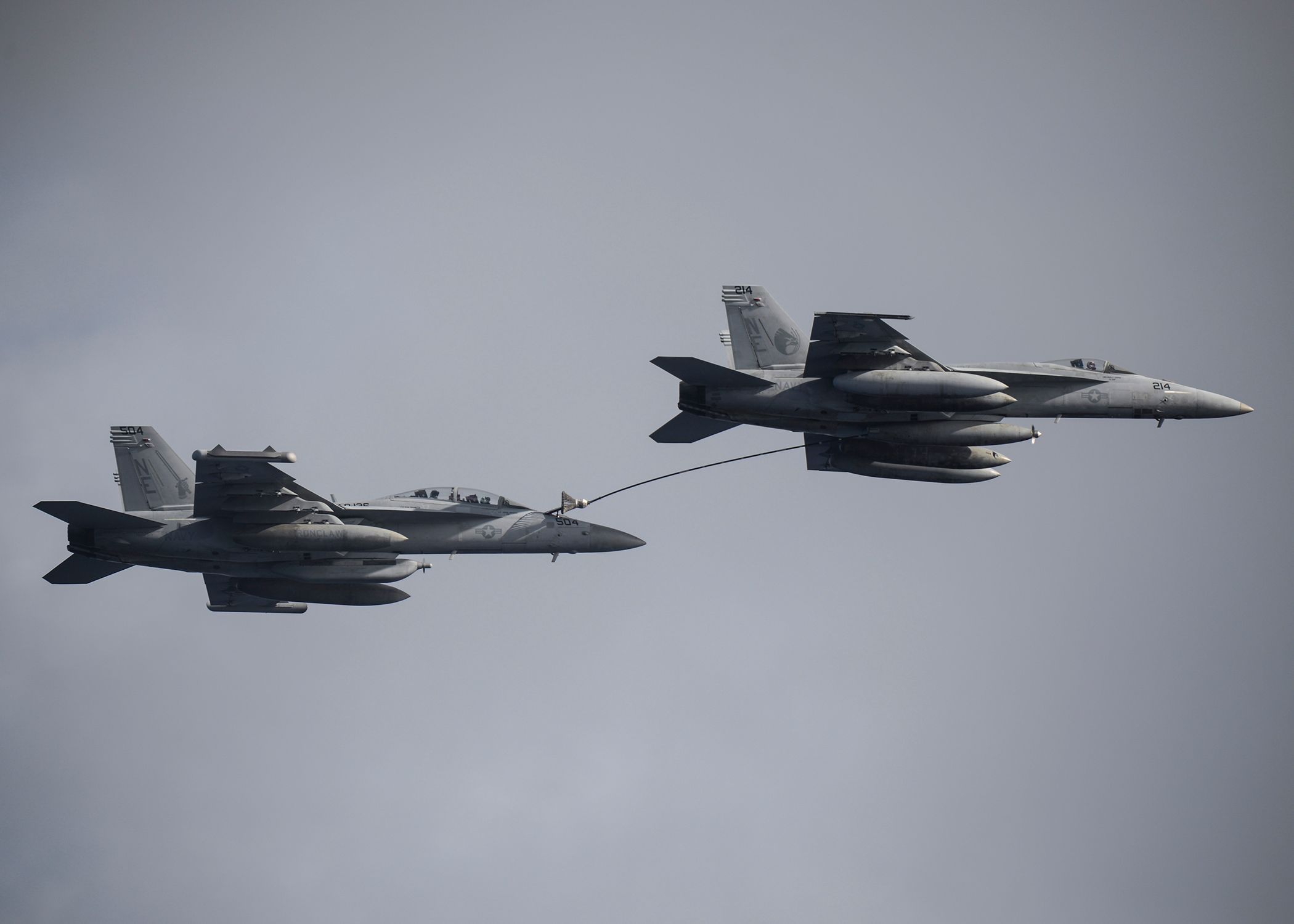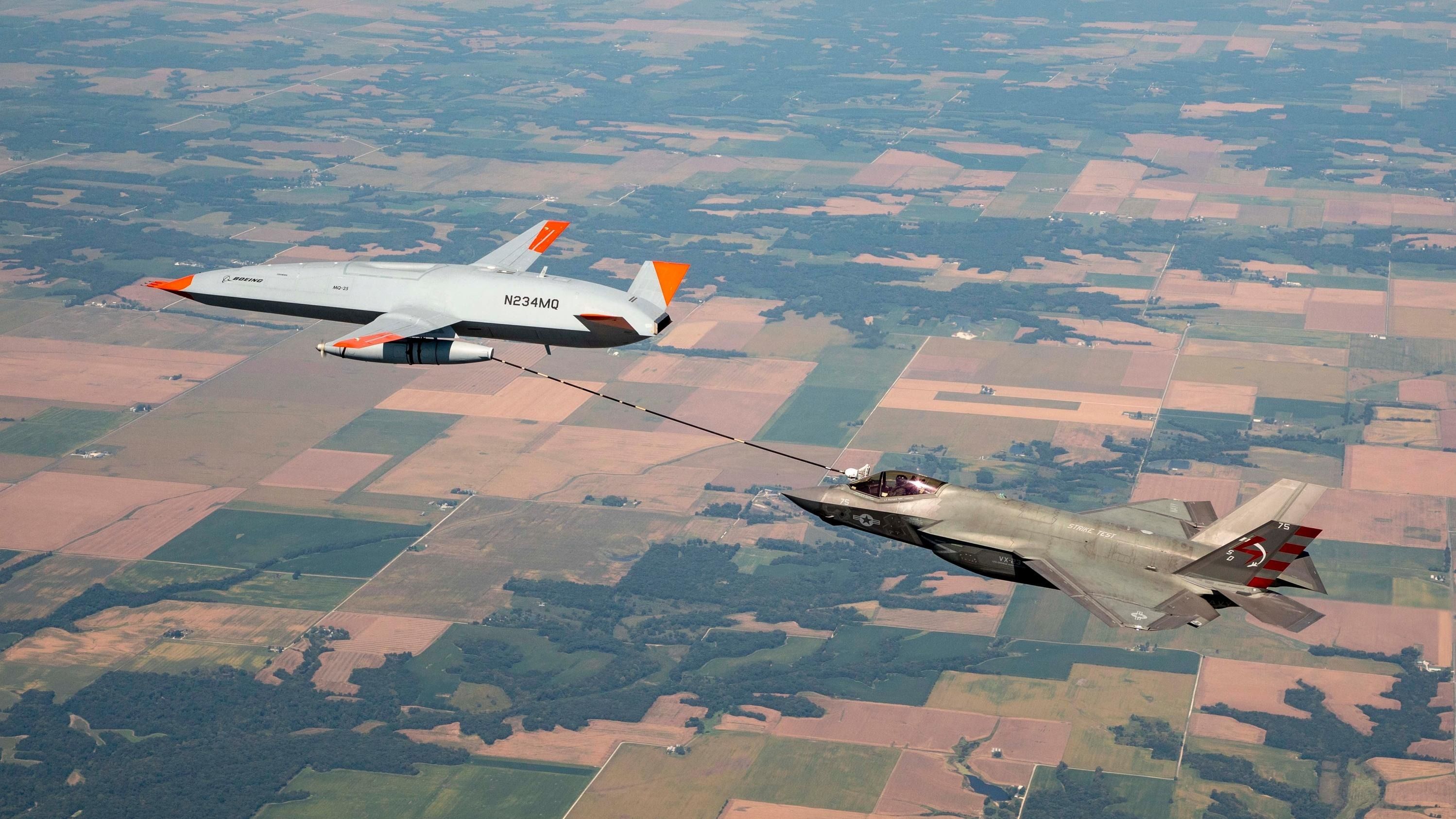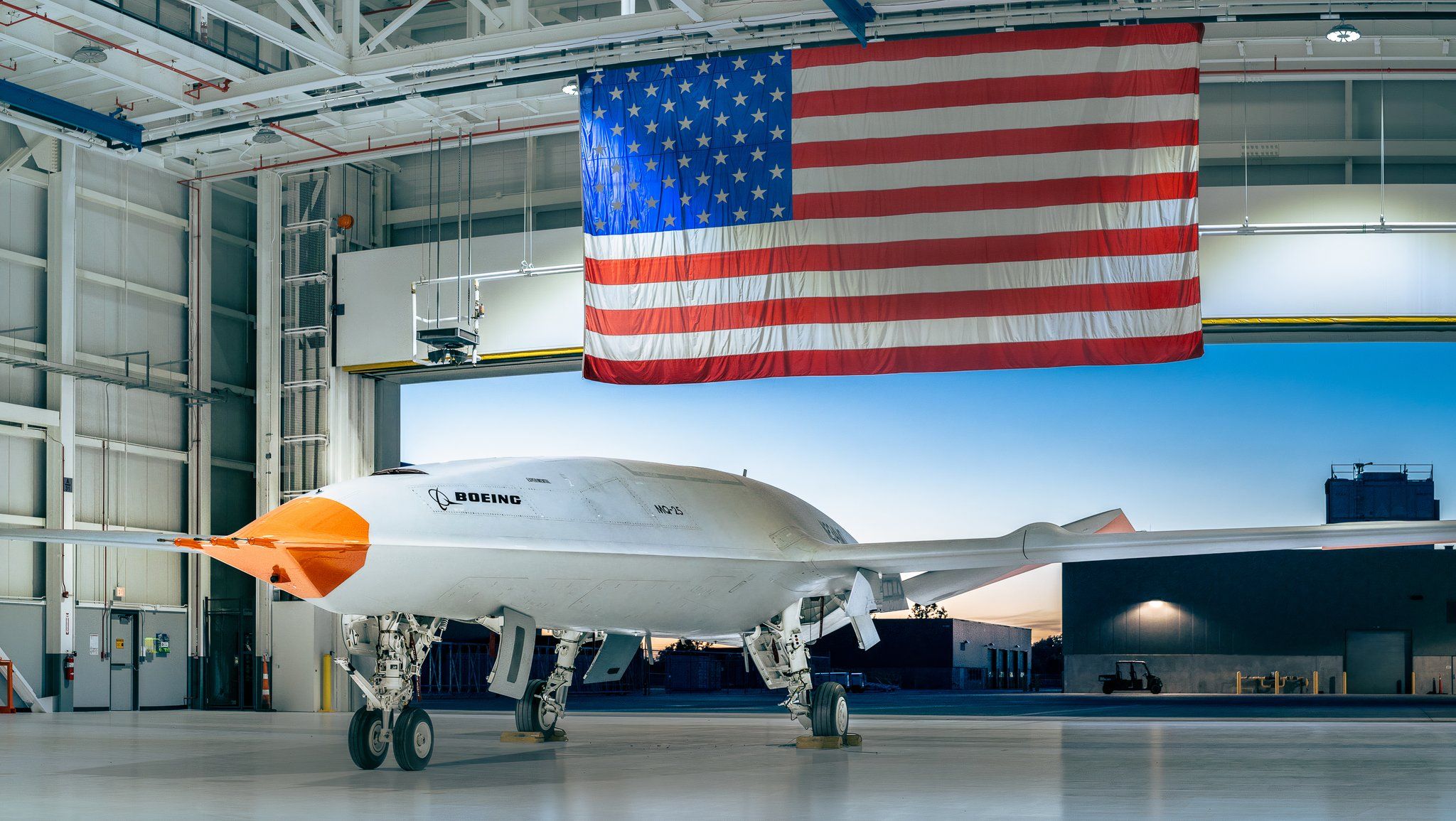Summary
- MQ-25 Stingray nearing US Navy service
- JPALS key for successful landings on carriers
- MQ-25 to reduce the need for F/A-18E/F Super Hornets in carrier tanker role
![]() Boeing
Boeing
is well on the way to getting its aerial refueling
drone, the MQ-25 Stingray, onto the United States Navy’s aircraft carriers with steady work since 2017 and a 2019 contract award. With a recent post on X (formerly Twitter) that the MQ-25 has successfully simulated Joint Precision Approach Landing System (JPALS) – the MQ-25 Stingray is approaching flight operations from US Navy aircraft carrier decks in 2026.
JPALS Testing Going Well, Based on Previous Efforts
Recently, on X, Boeing shared the good news that simulations of JPALS are going well:
JPALS is key to MQ-25 Stingray drones landing on the US Navy’s aircraft carriers after refueling combat aircraft. JPALS, according to John Scudi, Boeing MQ-25 Business Development and Acting Advanced MQ-25 Program Manager, is an improvement on the same family of software programs called Precision Landing Mode or PLM, such as MAGIC CARPET for the Boeing F/A-18 E/F Super Hornet plus the Boeing EA-18G Growler. Precision Landing Mode is key to guiding aircraft to aircraft carriers. PLM has reduced the need for field carrier landing practice – a necessary activity that is noisy enough to inspire litigation, as covered by Simple Flying.
Additionally, any aircraft carrier with the Lockheed Martin MD-5E Ground Control Station as part of the Unmanned Air Warfare Center aboard carriers can use JPALS – and the MQ-25. The first such station was recently installed on the USS George H.W. Bush. Below are some photos and a YouTube of the MQ-25A during 2021 deck testing on the USS George H.W. Bush.
Currently, the MQ-25 is getting ready for land-based catapult launches and arrested landings as a series of test flights before another round of carrier testing in 2025 – this time in flight and not just on the USS George H.W. Bush deck, as the pictures above show. But remember that the MQ-25 is intended to be a low-observable flying aerial refueler.
MQ-25 can carry 15,000 pounds of fuel to 500 nm from the carrier
The MQ-25 is intended to take 15,000lb (6,800 kg) of fuel to a distance of 500nm (926km) – and by doing so, relieve F/A-18E/F Super Hornets of the carrier flying tanker role. F/A-18E/F Super Hornets can tank the same weight of external fuel – or 2,250 gallons – about that same distance. 15,000 lb is enough fuel for 4-5 fighter jets
. Of course, this ignores that the F/A-18F two-seater carries 13,760 lb (6,241 kg) of internal fuel, while the single-seat F/A-18E has 14,700 lb (6,667 kg) of internal fuel – but there is a logical limit of how much internal fuel can also be given away. Nonetheless, one can see what 2,250 gallons of JP5 and a refueling pod looks on a F/A-18F Super Hornet below:
However, using Super Hornets as tankers has reduced the lifespan of the US Navy’s most reliable strike fighters. Plus, the Super Hornets are not exactly low-observable – thereby putting them at risk in high-threat environments, unlike the MQ-25 and the F-35C, which the MQ-25 has already been proven to be able to refuel as pictured below:
Photo: Boeing
The ability of a low-observable aircraft to refuel another cannot be understated. This will preserve the strike fighter’s stealth capabilities for a longer distance from threats.
Photo: Boeing
The US Navy and Boeing are also considering using the MQ-25 as a sensor platform and potential missile truck. According to The War Zone on April 10, Boeing made a model of a MQ-25A packing anti-ship missiles.
Bottom line: MQ-25 is pushing forward uncrewed flight
When on June 7, 2021, Boeing was able to have the MQ-25 Stingray refuel a F/A-18F Super Hornet – Leanne Caret, president and CEO of Boeing Defense, Space & Security, said in a statement,
“This history-making event is a credit to our joint Boeing and Navy team that is all-in on delivering MQ-25’s critical aerial refueling capability to the fleet as soon as possible. Their work is the driving force behind the safe and secure integration of unmanned systems in the immediate future of defense operations.”
Indeed, while the US Air Force is only beginning to Develop a Next-Generation Aerial Refueling System (NGAS) that may be a low-observable tanker and is attempting to give its fighter jets the ability to aerial refuel, the US Navy is getting closer to a true next-generation, low-observable aerial refueler.




